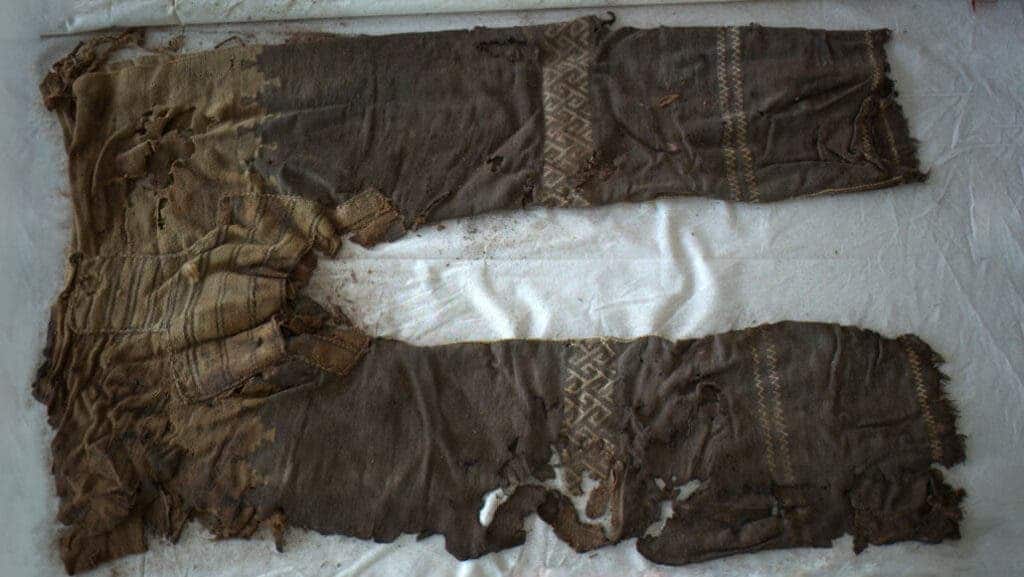That pair of jeans disintegrating in the bottom of your closet might look old, but that’s nothing compared to these pants. Back in 2014, a group of archaeologists discovered in China a pair of wool pants dating back to around 3,300 years ago – the oldest one ever found. Now, they’ve discovered the way the pants were likely made, and it involves innovative textile techniques.

The pants were found by a team of archaeologists excavating tombs in an ancient burial ground in the Xinjiang Uighur region of western China. The cemetery is located on the fringes of the Taklamakan desert, close to the Turfan oasis – a usual stopping place first for Bronze age nomads and then for the caravans of the Silk Route.
The very dry climate in the area preserved the bodies and the grave in a very good condition, including items like food and clothing. The pants were found in the remains of two warriors about forty years old. They were created for horse-riding, which shows in the design. They have straight-fitting legs and a wide crotch with elegant decoration.
The pants were likely part of an outfit that also included a poncho, a pair of braided bands to fasten the trouser legs, another pair to fasten the leather booths, and a wool headband. Of all the garments, the pants were the most special one. They had a very modern look for the time, featuring two-leg pieces that gradually widen at the top.
While the pants were discovered over eight years ago, the same group of researchers continued working on them. Now, they were able to find out how the pants were manufactured and even created a modern replica. It’s a tale of textile innovations and of how cultural practices expanded across Asia, the team argues in its new study.
An innovative approach
Initially, the researchers were puzzled over how the pants had been made, as there were no traces of cutting on the fabric. However, after a close examination, they discovered that a combination of three weaving techniques was used to manufacture them. This was later confirmed by the re-created version of the pants, made by an expert weaver.
The study also revealed that much of the garment consisted of twill, a versatile fabric weave that features in most modern jeans – making this an innovation in textile history. Twill changes the woven wool from firm to elastic, giving the person plenty of flexibility. The most popular fabrics for twill weaves are cotton and polyester or a mix of both.
There were also other innovations in the pants. On the knee section, a technique currently known as tapestry weaving was used to produce a more protective fabric at these joints. On the waist, a method approach was used to have a thicker waistband. A twining method was also used to create a decorative, geometric pattern across the knees and at the ankles and calves.
Today, jeans are manufactured following the same techniques as those used three millennia ago. Also striking is the fact that the cultural practices and knowledge from the ancient herding groups spread across Asia. The patterns used to decorate the horseman’s pants also appear on bronze vessels found in China from around the same time.
The findings behind the pants were published in the journal Quaternary International. If you are still curious to learn more there’s a documentary on YouTube that takes us to the excavation grounds in Asia where the historic pants were discovered. And there’s more. There are a few places online that are also selling their own versions of the pants.









